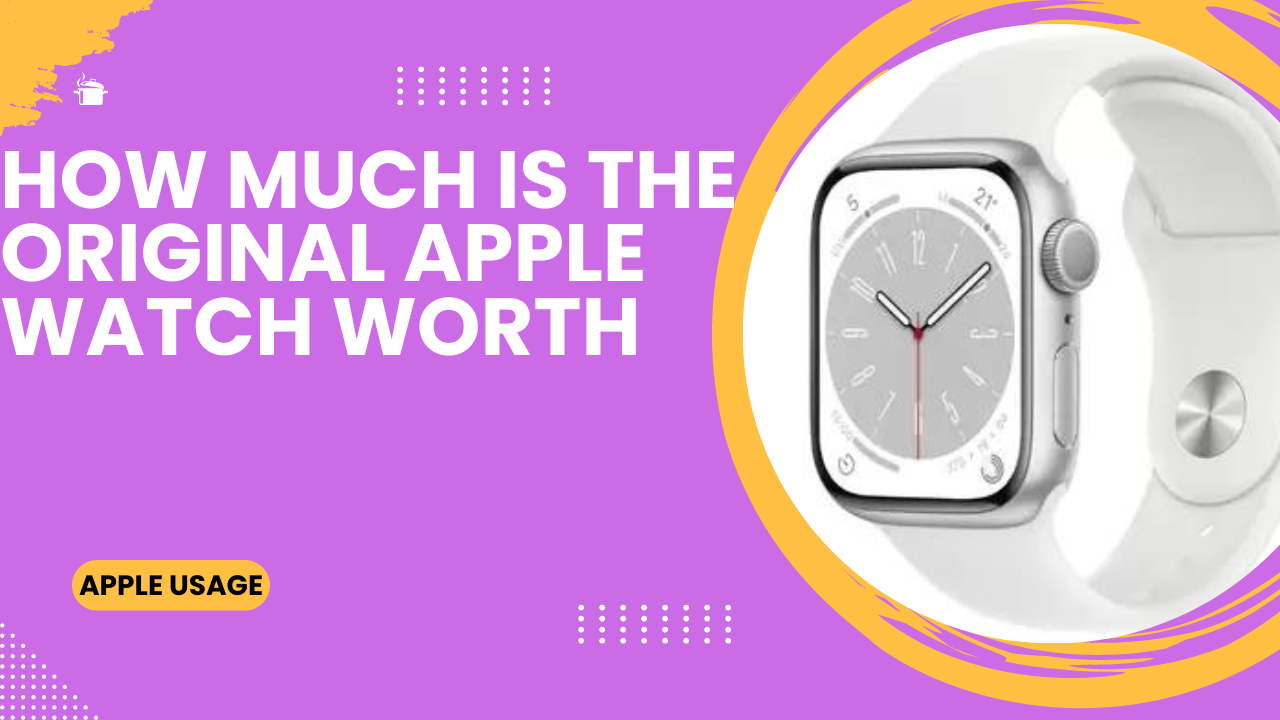The innovative stage of wearable tech in the last period has been amazing and it offers users not only simple fitness tracking but more. From these innovations, Apple’s watch is remarkable for the broad range of health monitoring systems it includes. An interesting feature of ECG is that it is capable of detecting fever. In the following article, we will discover that the Apple Watch can detect fever, the tech stands behind that, and its effect on self-care management.

Learning Technology Behind Apple Watches:
The technology behind the Apple Watch is a wizard of innovation, fusing high-tech sensors and algorithms to provide comprehensive health tracking capability. Fitted with optical and electric sensors for the heart and a temperature sensor, the watch measures data without any errors. Smart algorithms process this information, and they seek out patterns and deviations that can suggest health problems. With ongoing monitoring skills and real-time notifications, the Apple Watch stands out to be a flagship device for wearable health technology which is helpful for users to acquire certain information about their health.
Advanced Sensors and Algorithms:
The Apple Watch is fitted with cutting-edge highly accurate sensors which help to track a number of vital health metrics. All of these sensors are significant for fever detection, but especially the optical heart sensor, electrical heart sensor, and temperature sensor. The optical heart sensor is mainly used to measure the heart rate, by detecting blood flow through the wrist, whereas the electrical heart sensor is designed to capture the heart’s electrical activity. Although the temperature sensor is mainly used for detecting skin temperature changes, however, it would contribute greatly to discovering emerging fevers.
Integration of Health Data:
The Apple Watch calculates data from different sensors using sophisticated algorithms. The algorithms process variations from the user’s initial parameters through indicator patterns. For example, an elevated heart rate which is combined with an increase in skin temperature can be a symptom of having a fever. The watch will indicate the symptom to the user for possible health consequences which implies the user to evaluate or consult the doctor.
Continuous Monitoring and Alerts:
Apple Watch is one of its unique features that enables continuity monitoring which is one of the key advantages of it. And unlike the normal thermometers which provide instant measurements, the Apple Watch controls the changes over an extended time. This repeated data collection enables one to spot feeble patterns and disturbances that could warn of a fever. When the watch picks up similar symptoms, it sends a notification to the user giving them a snapshot of their health status instantly.
Current Health Monitoring Features of Apple Watch:
There are following features are there are important explanations are ;
Apple Health and the Influence of Apps:
Apple Health is a unified place for data gathered by the Apple Watch and as a result, users can have a complete picture of their health. It integrates apps such as Cardiogram and Qardio to make an enriching experience by accessing the heart rate variability and skin temperature deeper than the watch itself. As a result of this collaboration, people will be able to track the health markers with more effectiveness, and also timely detection of fever or other health issues will be made possible. Thanks to effective data privacy measures, users no longer need to be apprehensive of Apple Health and other apps since they can be sure that their personal health information will not be leaked.
Apple Health Integration:
Apple Health App functions as a core point for the health data that Apple Watch gathers. This integration provides users with the ability to see their health indices in one place which allows them to keep tabs on the variation over a period. Apple Health could be an aggregator of data from other sources too, including exercise apps and medical equipment, hence offering a complete overview of one’s health information. It is extensively beneficial in recognizing the patterns that are associated with fever or other health issues.
Third-Party Health Apps:
Quite a few third-party apps, which could also detect the fever of users effectively, enrich the functions of Apple Watch. Apps like Cardiogram, Qardio, and others utilize watch sensors much for more comprehensive health information. Such apps can provide readouts of heart rate variability, skin temperature, and other metrics which can help in early detection of fever symptoms. To discover more about their health and get professional quality information, users can rely on these apps.
Data Privacy and Security:
As personal health data is the field with the most data that is being collected, data privacy and security become the most important issue. Apple has applied technologically enhanced security measures to prevent health data from being stolen. Data is encrypted both in the apparatus and during the transfer in a way to make sure that the private data is held in a protected manner. Additionally, only those apps that the user has chosen will be allowed access to this health data hence the user has an additional layer of privacy.
Considerations for personal health management:

This feature of the Apple Watch with the ability to detect early fever is a great advantage both in terms of personal and health management engineering. It is one of the factors that help the users to be self-reliant as they can seek medical aid timely and this prevents them from developing serious complications. The watch is a perfect solution for both the elderly who should ensure health monitoring or those suffering from chronic illnesses who need it regularly. Caregiving staff and medical specialists can provide remote health monitoring services that help to track patients’ health indicators and thus determine efficient means of health maintenance to increase general well-being.
Early Detection and Intervention:
The capability of the Apple Watch that may be used to detect fever earlier can offer a lot of promise in personal health monitoring. Catching the diseases early allows for making the appropriate moves that eventually stop the illness from worsening. For the case of individuals with chronic health conditions and even weak immune systems individuals, this capability is very meaningful. Via the early detection of fever, users will be able to initiate guidance from the doctor as soon as the first symptoms occur and so prevent complications further on.
Remote Health Monitoring:
For people who need regular health monitoring correspondingly, elders and patients with chronic illnesses, the Apple Watch is a great option In the age of digitization, physicians, and caregivers can now monitor patients’ health data through apps measuring symptoms such as fever which can be made available inside the connected apps. The reason behind this in-person frequent visit reduction is to create more space for the patient’s health management.
Taking full charge of their health situation by providing and recognizing insights:
Via the constant health tracking provided by the Apple Watch, customers get to take action and help themselves better when it comes to their health. Users can establish their baseline health metrics and identify any deviations which may be markers of worse health habits and they can be able to make informed decisions regarding their health and lifestyle which are based on facts. These forward-looking ways of health care can be beneficial for the general health status altogether and as a result, discovery of some possible health issues can be easier.
Closing Remark:
Wearable technology is a step ahead in medical monitoring, as the case of the Apple Watch detecting fever shows. By using highly sophisticated sensors, continuous data aggregation, and outsourcing attention to related third-party apps, Apple Watch offers a unique set of tools that can resonate awareness, early detection, and intervention. Given the fact that cut-edging technology keeps on changing, it is expected that wearables will in future play a bigger role in the management of personal health promoting more precise, convenient, and comprehensive health monitoring solutions.
FAQs:
There are following FAQs are;
Q1: The Apple Watch replaces the conventional contact thermometer with its ability to detect one’s body temperature and record it.
Then the Apple Watch can show sickness signs, which may lead to a fever, it is just a nice tool to show the trend and temperature, not to replace the conventional thermometer in terms of precise temperature measurement.
Q2: How precise is the Apple watch in identifying fever?
The Apple Watch gives you general information on heart rate throughout the day and skin temperature. An accurate fever diagnosis should be done using a traditional thermometer.
Q3: Am I supposed to seek medical help if my Apple Watch just notices a potential fever?
In case your Apple Cell phone informs you of a possible temperature, you can use a traditional thermometer to confirm and if necessary just consult a health practitioner.
Q4: Which type of Apple Watch is more efficient for health monitoring?
The new health tracking features in the Apple Watch models such as Series 6 and above are more accurate and include more advanced sensors.
Q5: How can I be sure the data I collect about my health through my Apple Watch is secure?
Make your Apple Watch and connected applications update at a regular time interval. Survey app permissions and turn on security features like encryption and two-factor authentication.




